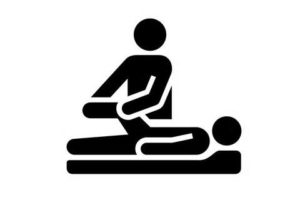How do I answer – Myotherapy compared to Physiotherapy? Part I

You see a patient for the first time. After some assessment you commence the treatment. After a bit of silence, then comes the question. You can almost predict it, you can feel it…
‘So …’
You could put the words in their mouth for them, but you wait, pretending to hear the question for the first time.
‘. . . what’s the difference between Myotherapy and … like … Physiotherapy?’
If you are a Myotherapist like me then you will have been asked this question 3467 times.
You breathe in, thinking to yourself ‘How do I keep this simple?’ Well…
I have spent the last 20 years trying to come up with an answer to this question in less than 400 words. It’s kind of not that easy is it? Of course there is the one-liner: “’Myo’ means muscle. So Myotherapy manipulates muscles and tendons – you know the ‘soft’ tissues. Whereas other therapies like chiropractic manipulate the joints directly.”
This describes what we do … kind of. In recent years I have taken to answering the question more in terms of what kind of conditions, generally, Myotherapy is really good at solving. So in answer to the question ‘what’s the difference between Myotherapy and Physiotherapy?’ these days I describe very generally what each therapy is tailored toward.
So I say:
‘If I were to really generalise, I would say that the strength of Physiotherapy is in acute injuries…
… Like when you ‘tear’ something, twist a knee, roll an ankle and there is immediate swelling or bruising. The rehabilitation of those kind of injuries over 4-6 weeks is the real hallmark of Physiotherapy. Myotherapy on the other hand is excellent at finding long term solutions to those ‘invisible’ pains. Pains that reoccur for months or years on end like headaches, knee pain or lower back pain that turns up regularly.’
This is a simple and true generalisation. For the layperson it helps them to see that Myotherapy has a unique contribution to the health industry without going into technicalities. You may have noticed that when you start talking about ‘Myofibrils’ that the eyes glaze over. Your patient is a human being and so basically they want to know ‘What’s in it for me?’ So keep it simple and speak about the results not the process. You may feel like this is an insult to your intelligence but I think, at least initially, it is the most helpful thing for the patient to hear. When they hear that Myotherapy is better tailored to resolving those long term chronic pains like headaches, they immediately think ‘Headaches! That is what I have! I am in the right place!’
When a patient genuinely wants to understand how Myotherapy is different I go into some more detail.
Check out Part II to find out more.
I hope this helps you in your practice.

Timothy J. King


